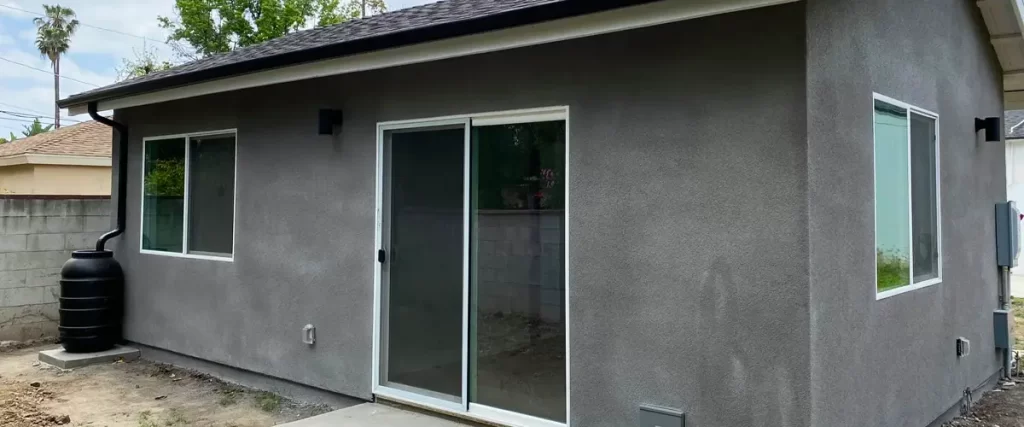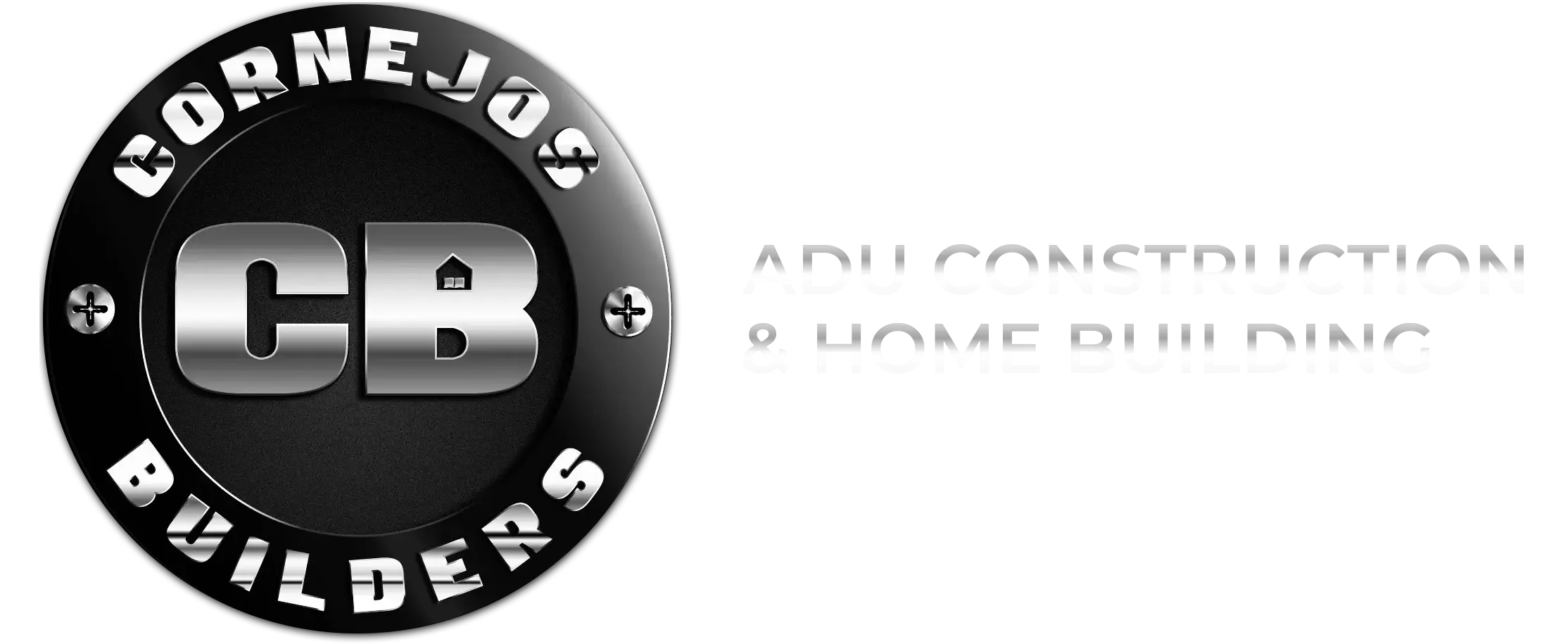Building an Accessory Dwelling Unit (ADU) in Bellflower, CA offers great opportunities for homeowners to increase their living space and property value.
However, before you start planning, it’s important to consider Bellflower’s unique geographical and environmental factors. One of the most significant factors is the region’s earthquake risk, which has a direct impact on ADU construction and safety requirements.
If you’re a homeowner considering an ADU, it’s critical to understand how earthquakes influence the design, building process, and safety standards of your new space. California, particularly Southern California, is known for its seismic activity, and Bellflower is no exception.
From regulations to construction techniques, ensuring that your ADU meets safety standards is essential to protecting your investment and the well-being of your family.
Let’s dive into how Bellflower’s earthquake risk affects ADU construction and what safety measures you must keep in mind when building in this seismically active area.

Understanding Bellflower’s Earthquake Risk: What Homeowners Need to Know
Bellflower, located in Los Angeles County, is situated near several fault lines, including the famous San Andreas Fault. As such, the area experiences moderate seismic activity.
Earthquakes in California are not just a concern for coastal cities or those directly on fault lines; the entire state is at risk. In fact, Bellflower is located in a zone that experiences moderate to high seismic risk, with the possibility of significant tremors from earthquakes both near and far.
For homeowners planning an ADU in Bellflower, understanding this risk is paramount. The California Building Standards Code (CBSC) is very clear about the seismic safety requirements for construction in earthquake-prone areas.
This includes guidelines for how structures must be designed, reinforced, and built to withstand seismic forces. Whether you’re constructing a detached garage conversion or a full-blown independent ADU, earthquake safety must be incorporated into your plans.
The Importance of Seismic Design in ADU Construction
When planning an ADU in Bellflower, one of the most important factors to consider is seismic design. Seismic design refers to how the structure is built to resist the shaking caused by earthquakes. It involves reinforcement of the foundation, walls, and roof systems to prevent structural failure during a seismic event.
In ADU construction, the most common structural reinforcement techniques include:
- Foundation Design: The foundation is the most critical component in earthquake-resistant construction. For Bellflower, a solid and well-anchored foundation is essential to prevent the ADU from shifting during an earthquake. Common methods for strengthening foundations include bolting the structure to the foundation or using steel reinforcement.
- Shear Walls: These are walls specifically designed to resist lateral forces that occur when an earthquake shakes the building. In ADUs, shear walls are often placed strategically to provide strength and support to the overall structure.
- Roof Strengthening: Roof systems need to be reinforced to prevent collapse in the event of seismic activity. Properly securing the roof trusses or adding cross-bracing ensures that the roof can resist lateral shaking forces.
- Non-structural Elements: Cabinets, fixtures, and appliances should be secured to prevent them from becoming projectiles during an earthquake. This can be achieved through securing shelves, water heaters, and other heavy items.

Local Safety Codes and Regulations for ADUs in Bellflower
In addition to general seismic safety principles, Bellflower homeowners need to be aware of specific local regulations. The city follows the California Building Standards Code (Title 24), which mandates certain seismic safety features for new construction. Here are some key points for ADU construction:
- Seismic Design Category (SDC): Bellflower is categorized in a moderate seismic zone, so buildings must comply with SDC regulations to ensure earthquake resistance. This includes specific requirements for how buildings are anchored to their foundations and how much movement they can withstand.
- Foundation Requirements: In areas with higher seismic risk, such as Bellflower, foundation requirements are stricter. For example, slab-on-grade foundations may be required in some areas, or the installation of steel reinforcement in existing foundations may be necessary.
- ADU Permitting: Before starting construction, you must obtain the necessary permits from Bellflower’s Building and Safety Division. These permits will ensure that the construction meets local earthquake safety requirements and that your ADU is in compliance with all safety standards.
- Retrofitting Older Structures: If you’re converting an existing structure into an ADU (for example, converting a garage or a shed), it may need to be retrofitted to meet modern seismic safety standards. Retrofitting can involve reinforcing the foundation, adding shear walls, and updating roof systems.
How Earthquake Safety Measures Impact the Cost of ADU Construction
With the added seismic safety measures required in earthquake-prone areas like Bellflower, many homeowners are concerned about the potential increase in construction costs. It’s true that certain earthquake-resistant features can add to your overall project budget, but they are essential investments for the longevity and safety of your ADU.
For example, bolting the ADU to the foundation or adding shear walls will increase material costs. In general, you should expect an increase of anywhere from 10% to 15% in construction costs due to the need for earthquake-resistant reinforcement.
However, this additional cost is small compared to the peace of mind and long-term safety it provides. After all, building an ADU that can withstand seismic activity ensures that your property retains its value and minimizes the risk of severe damage during an earthquake.

How Earthquake Risk Affects Your ADU Insurance
In addition to construction safety, earthquake risk also impacts your insurance requirements. Homeowners in Bellflower need to be aware of their insurance policies when it comes to earthquake coverage.
Standard homeowners’ insurance typically does not cover earthquake damage, so you’ll need to purchase a separate earthquake insurance policy to protect your property, including your ADU.
The cost of earthquake insurance can vary based on the value of the ADU, its location, and the construction methods used. However, given the region’s seismic risk, this is an important consideration for any homeowner building an ADU.
Steps You Can Take to Ensure Earthquake Safety in Your ADU
To ensure your ADU is as earthquake-resistant as possible, follow these steps:
- Work with Experienced Contractors Like Us: Hire contractors who are familiar with local seismic safety regulations. They’ll be able to guide you in selecting the appropriate construction techniques and materials.
- Incorporate Seismic Engineering: Hire a structural engineer who can assess your ADU design and recommend the best solutions to strengthen the building against earthquakes.
- Retrofitting: If you are converting an existing structure, have it inspected for seismic weaknesses. Adding steel bracing, bolting the structure to its foundation, and adding shear walls can greatly improve its earthquake resistance.
- Comply with Local Building Codes: Ensure your ADU construction complies with Bellflower’s building codes. This may include ensuring that the foundation is earthquake-resistant, that walls are reinforced, and that non-structural elements are anchored.
- Choose Durable Materials: Use earthquake-resistant materials such as steel and concrete for key structural elements like the foundation, walls, and roof.
FAQs About How Earthquake Risk Impacts ADU Construction
1. What is the seismic risk in Bellflower, CA?
Bellflower is located in a region of Southern California with a moderate to high risk of seismic activity. The area is near several fault lines, which means that earthquakes can pose a serious threat to unreinforced buildings.
2. Does my ADU need to be earthquake-resistant?
Yes. All new constructions, including ADUs, must comply with California’s earthquake-resistant building standards. This includes reinforced foundations, walls, and roof systems.
3. How can I make sure my ADU is earthquake-safe?
Work with experienced contractors and structural engineers to ensure your ADU is designed and built according to seismic safety standards. Retrofitting existing structures is also essential to meeting these standards.
4. Will building an earthquake-resistant ADU cost more?
Yes, earthquake-resistant features such as bolted foundations and shear walls can add to the construction cost. However, this added cost is essential for the safety and longevity of your ADU.
5. Do I need earthquake insurance for my ADU?
Yes, earthquake insurance is a wise investment for homeowners in Bellflower. It’s not included in standard homeowners’ insurance policies and will protect your property against damage from earthquakes.

Conclusion: Preparing Your ADU for Earthquakes in Bellflower
Building an ADU in Bellflower offers homeowners a chance to expand their living space, but it’s essential to take the region’s earthquake risk into account. By adhering to local seismic regulations, working with experienced professionals, and incorporating earthquake-resistant design elements, you can ensure that your new ADU is both safe and durable.
If you’re ready to start planning your ADU, make sure to consult with experts who are familiar with earthquake safety in Bellflower. Protect your investment and your family by making seismic safety a priority in your ADU construction.
Ready to get started on your ADU project? Contact us at (562) 319-3178 for a consultation on earthquake-safe ADU construction in Bellflower, CA. We’re here to help you navigate the complexities of building a safe and secure ADU!
